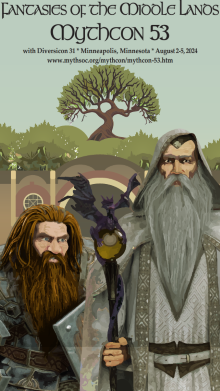Home > MYTHSOC > Mythlore > Vol. 41 (2022) > No. 2 (2022)
Abstract
Tolkien’s wizards are some of the most interesting and impactful characters in The Lord of the Rings, sent to Middle-earth to inspire the free peoples to resist Sauron. Principal among the Istari are Gandalf and Saruman, both of whom feature prominently in the events of The Lord of the Rings. A much more minor role, however, is played by Radagast the Brown, who appears only in passing mentions in The Hobbit and serves almost as a messenger in The Lord of the Rings. These three Istari enable an interesting discussion of environmental relationships, with Radagast and Saruman portrayed as failures and Gandalf alone successful. Radagast is said to have forsaken Men and Elves for the birds and beasts and thus fails in his mission. Saruman also fails, but because of his lust for power and consequent subjugation of people and landscapes, especially Isengard, the Shire, and Fangorn. Gandalf alone succeeds, caring both for the landscapes of Middle-earth and for its peoples. In an environmental ethical framework, Saruman aligns in an extreme anthropocentric position, prioritizing his own preferences over the health of others and their ecosystems. Conversely, Radagast seems to align more with the ecocentric side of the spectrum, considering the Free Peoples relatively unimportant and giving himself instead to the birds and the beasts. In contrast to both, Gandalf understands himself as accountable to the Valar for the accomplishment of his mission to stir up the Free Peoples in opposition to Sauron, alongside care of nonhuman organisms and their environment. Tolkien’s framing of Gandalf as the only successful wizard underscores this theocentric approach as his preferred resolution of the tension between humans and the nonhuman—rightly relating all of them to one another in the service of their Creator.
ORCID ID
0000-0003-1822-9375


